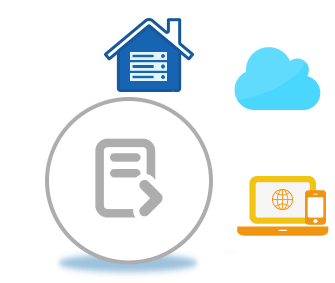Digitally Sign PDF File Online via e-Signature App or using C++
Develop powerful C++ based PDF document signing applications. Freely add digital signature into various documents including PDF files online via app with instant download.
Add Electronic Signature into PDF Files Online using App
- Upload PDF files to sign digitally
- Add text for signature or upload signature image
- Click the “Sign” button
- Download the signed PDF file
Digitally Sign PDF File via C++
- Load the PDF file
- Define PdfFileSignature
- Load the pfx file
- Use the Sign method to sign the document
- Save the signed PDF file
C++ Code : Add Digital Signature in PDF Files
Develop E-Signature Application using C++
Need to develop C++ script or utility app to easily sign multiple PDF files electronically? With
Aspose.PDF for C++
, child API of
Aspose.Total for C++
, any C++ developer can integrate the above API code to program eSigning app for signatures across documents. Powerful C++ library for document signing, supports many popular formats including PDF format.
PDF eSignature library for C++
There are options to install Aspose.PDF for C++ onto your system. Please choose one that resembles your needs and follow the step-by-step instructions:
- Install a NuGet Package . See Documentation
- Install the library using Package Manager Console within Visual Studio IDE
System Requirements
You can use this C++ library to develop software on Microsoft Windows, Linux and macOS operating systems:
- 32-bit operating systems.
- Microsoft Windows desktop (7, 8, 10)
- Old versions of OS (XP, Vista and Server 2003)
- Microsoft Visual Studio 2017 or later.
If you develop software for Linux or macOS, please check information on additional library dependencies in
Product Documentation
.
FAQs
- Can I use above C++ code in my application?Yes, you are welcome to download this code. One can easily develop a professional solution to add digital signature in PDF file using C++. Use Aspose PDF eSignature API to develop high-level, platform independent software in C++.
- Is this document digital signing App work only on Windows?You have the flexibility to initiate document signing from any device, irrespective of the operating system it runs on, whether it be Windows, Linux, Mac OS, or Android. All that's required is a contemporary web browser and an active internet connection.
- Is it safe to use the online app to sign multiple PDF documents?Of course! The output files generated through our service will be securely and automatically removed from our servers within a 24-hour timeframe. As a result, the download links associated with these files will cease to be functional after this period.
- What browser should to use App?You can use any modern web browser like Google Chrome, Firefox, Opera, or Safari for online PDF document compression.
- How can I sign multiple PDF files?Start by uploading one or more files you want to sign. You can either drag and drop your PDF files or simply click inside the white area. Afterward, click the 'Sign' button, and our online esigning app will quickly process the uploaded files.
- How long does it take to sign the PDF files?This e-signature application operates quickly, It may take a few seconds to upload the files and sign them.
Explore File eSignature Options with C++
What is PDF File Format?
PDF, or Portable Document Format, is a file format designed for presenting documents in a manner that remains consistent across various software applications, hardware devices, and operating systems. Each PDF file contains a comprehensive description of a fixed-layout document, encompassing text, fonts, graphics, and other necessary information for accurate display. Initially developed by Adobe Systems in the early 1990s, PDF served as a means to share computer documents while preserving text formatting and inline images.
PDF files are typically generated using software like Adobe Acrobat or similar PDF creation tools. Presently, PDF has become an open standard governed by the International Organization for Standardization (ISO). This standardization ensures compatibility and interoperability across different platforms and systems. To view PDF files, users can utilize free software such as Adobe Reader or other PDF viewers available.
One of the significant advantages of PDF is its platform independence, allowing seamless viewing and printing on a wide range of devices and operating systems. Regardless of the hardware or software used, the document’s layout and content will remain intact. This universal accessibility has contributed to the popularity of PDF as a preferred format for sharing and distributing documents across diverse platforms and systems.
PDF’s capability to encapsulate a complete document, including text, fonts, graphics, and formatting, makes it a reliable choice for various applications. Whether it’s sharing important reports, publishing e-books, distributing forms, or delivering professional presentations, PDF ensures consistent document rendering and reliable preservation of content across different environments.




